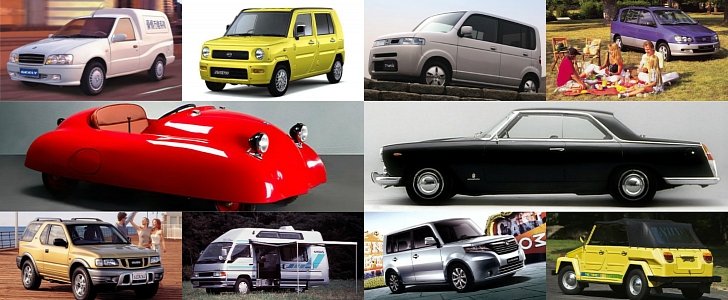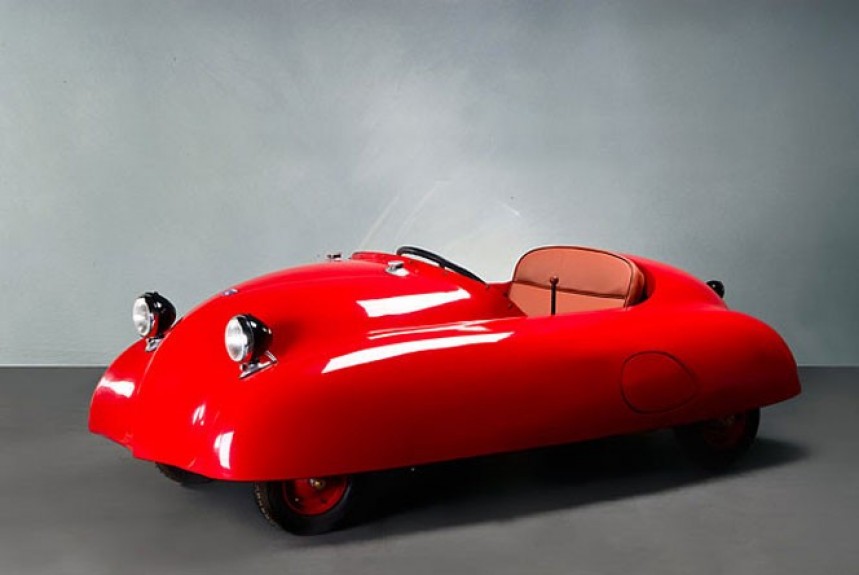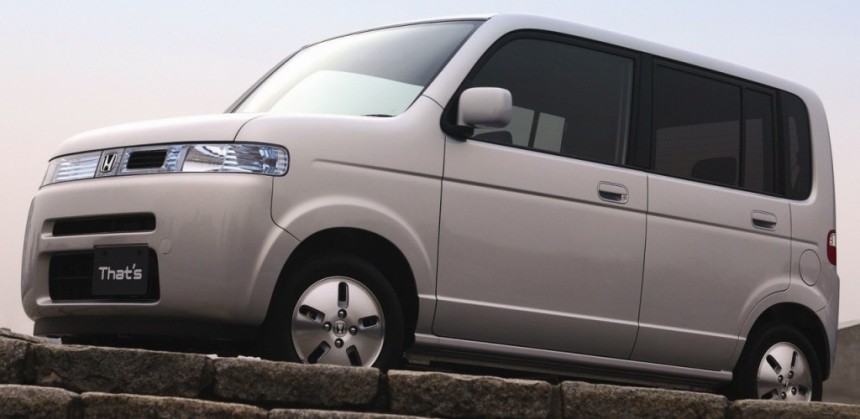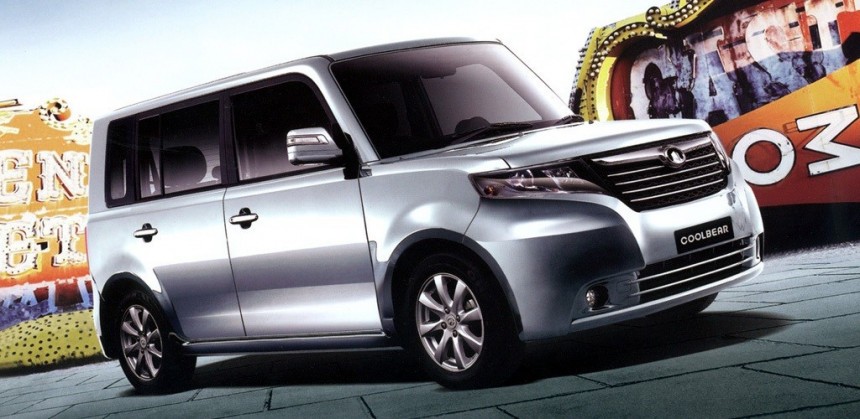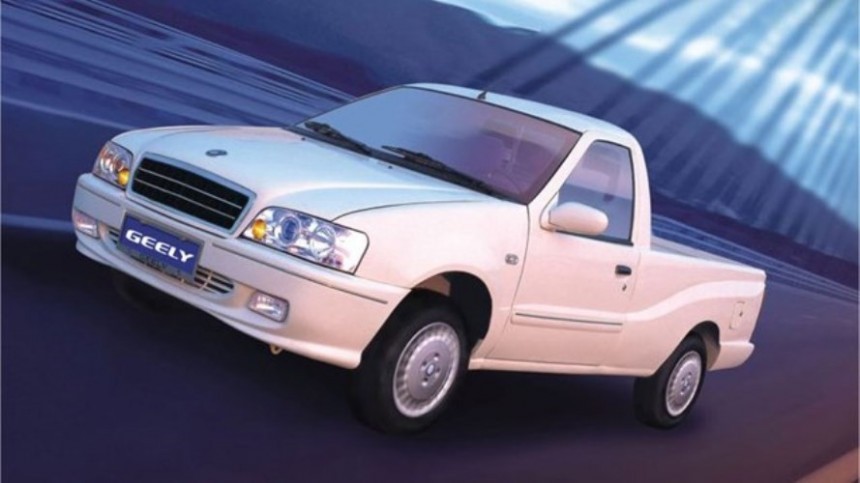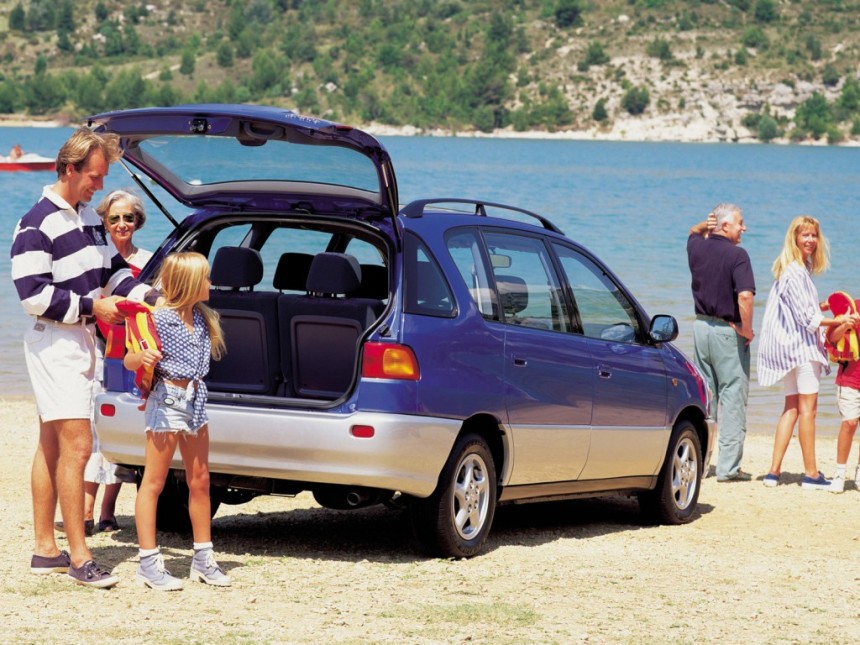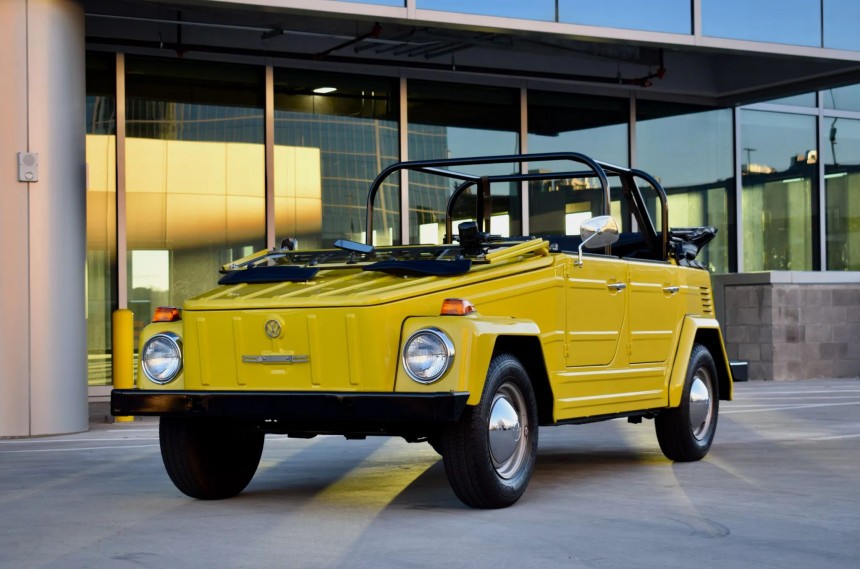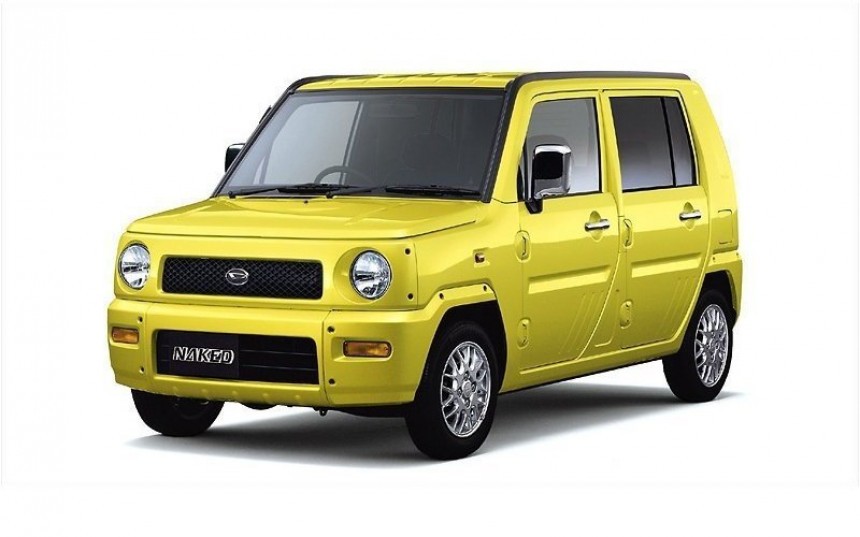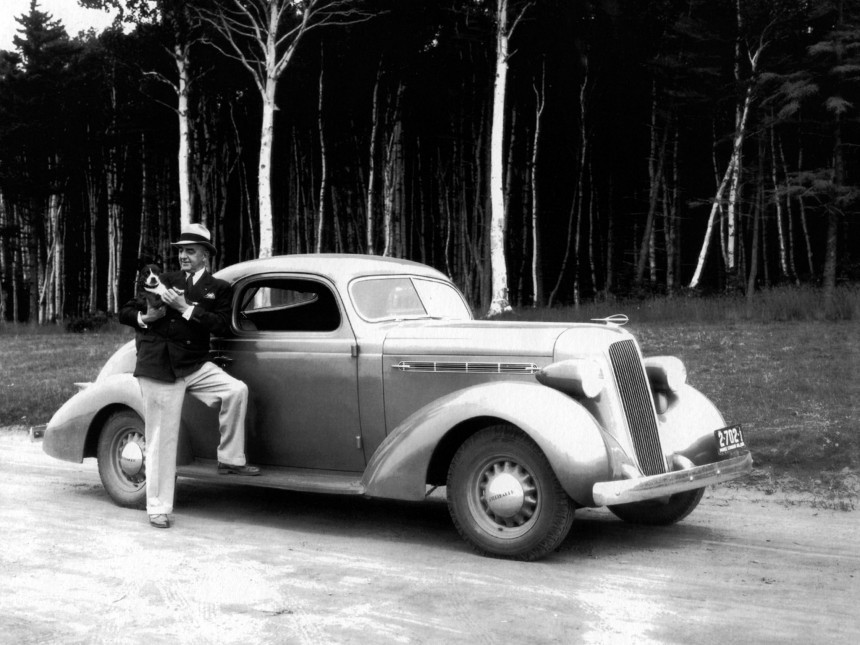A wise man once said that a good name is to be chosen over great riches. King Solomon couldn't have imagined how much a good name would matter in the 21st century, more so if we're talking all things automotive.
Be that as it may, branding professionals do get it badly wrong from time to time. A notable example would be Mitsubishi's rear-drive Starion. The Japanese carmaker was adamant that Starion stands for the Star of Orion, but legend has it the Japanese find it hard to pronounce stallion. Given that a television commercial from the 1980s depicts the fastback coupe and Starion written below a stallion’s head, it appears that we’re dealing with a perfect case of Engrish.
Looking at the glass half full, branding professionals also happen to get it right big time. However, we're not going to bore you with the Mustang, Charger, Magnum, Javelin, Marauder, Hornet, and Interceptor. These cars are sufficiently famous, and chances are that you're very knowledgeable about at least one of the aforementioned bruisers.
Instead, this story is a glimpse into the curious world of obscure cars with weird names. Like Weird Al Yankovic weird, as in that particular kind of weird that could make you roll on the floor, laughing your head off. This may not come as a surprise to you, but many of the automobiles that made our list come from Japan. Two are from China, two from Italy, and the remaining vehicle is a German convertible that shares its mechanical bits with the air-cooled Beetle.
Without further ado, let's kick this off with a cutesy roadster that simply cannot be replicated today due to safety regulations and little in the way of demand for open-top microcars.
After the largest armed conflict the world has ever seen, Officine Meccaniche Volugrafo entered the microcar business with the Bimbo 46. Production started in 1945, then came to a screeching halt in 1948. Roughly 60 units were assembled in total, of which two are exhibited in museums in the Italian Republic and Belgium.
Mickey Mouse would look fantastic behind the wheel of the Bimbo, although its name is anything but Disney material. No doors, no side panels for the canvas top, and no reverse gear explain – to a degree – why this fellow lost the battle to the likes of the Fiat 500 Topolino.
A single-pot motor with a displacement of 125 cubic centimeters is much obliged to crank out five ponies on full song. Weirdly enough, it drives only the left rear wheel. The cartoonish roadster also received a sports version with a second motor driving the right rear wheel.
Regarding the Honda That's from 2002, imagine the conversion between a salesman and a potential customer. "What's that? Why, that's a That's!" Although this boxy kei car is hugely impressive packaging-wise, the Japanese automaker could have named it something a bit more – say – catchy and pleasant to one's ears.
That’s was one of the most spacious kei cars of its era, with kei car being a class of vehicles that slots under the A-segment city car. Because kei cars are restricted in length and width, Honda made this vehicle roomy by going up. The Honda Life measures 1,580 millimeters (62.2 inches) in height with front-wheel drive, whereas That's levels up to 1,620 millimeters (63.8 inches).
Overall length and width are shared between these siblings. That's was available with either a naturally aspirated three-pot engine or a turbocharged version of said lump. Speaking of which, the single-overhead-cam turbocharged mill was initially known as the Life Dunk.
The Scio... – ahem – Coolbear was obviously influenced by the quirky yet practical Scion xB. China-based Great Wall Motor started production of this B-segment hatchback during a time when GWM faced a number of cross-border intellectual property disputes, of which the legal battles with Fiat and Nissan stand out.
Offered between 2009 and 2015, the Coolbear was joined by a Haval-branded crossover version that was christened M2. Neither sold particularly well, and neither can be considered exciting due to anemic four-pot engines (1.3 and 1.5 liters).
China's largest pickup truck and sport utility vehicle manufacturer also copied the front end of a Toyota concept for the Coolbear, that concept being the F3R from the 2006 North American International Automobile Show in Detroit. Nothing really came of it, partly because Scion sales dropped dramatically from the 173,034 vehicles delivered in 2006 to 130,181 in 2007.
We all know what a wizard is, and wizards tend to be mysterious because why not? On the other hand, what exactly is a mysterious utility wizard? The answer comes from Japanese manufacturer Isuzu Motors, which is best known for its world-class diesel engines and commercial vehicles.
The Mystery Utility Wizard came to be in 1989 with either rear- or four-wheel drive. Its North American cousin is the first-generation Honda Passport. Remember the Isuzu Rodeo produced at the Subaru Isuzu Automotive plant in Indiana? That's a Mystery Utility Wizard as well.
The original MU series would be discontinued in 2004 for the MU-7 and – later on – the MU-X. Still produced at the moment of reporting, the Multi Utility-eXtreme is twinned with the Isuzu D-Max mid-size pickup truck, which spawned the badge-engineered Mazda BT-50. Unfortunately, neither the D-Max nor the BT-50 are offered stateside.
Before Geely brought the Rural Nanny to the Chinese market, there were hardly any small pickup trucks in the Middle Kingdom. Also known as the PU, the two-door coupe utility is mechanically related to the Daihatsu Charade.
Rather than Daihatsu, it was licensed from defunct Chinese automaker Xiali. Due to declining sales, Xiali would be absorbed into the FAW Group. The once-successful company folded a little under two decades after the launch of the Rural Nanny. It would be later joined by the Urban Nanny.
The most basic engine-tranny combo was 1.0-liter I4 and four-speed manual. Given this displacement and number of gears, it should come as no surprise that Geely's most basic specification for the Rural Nanny couldn't exceed 98 kph (61 mph).
Better known as the Avensis Verso or Ipsum, Toyota used the Picnic nameplate for this compact multi-purpose vehicle in a number of export markets, including Indonesia. Believe it or not, the Picnic was produced over the course of two generations from 1995 to 2010.
It's hard to label the Toyota Picnic as being a bad car, but it's not exactly desirable either. Think of it as a small minivan, a necessary evil for the family man. As expected, the press photos of the first-gen Picnic feature a family having a picnic.
Called SportsVan in Denmark, the Picnic featured a selection of four-cylinder engines and two transaxles in the form of a five-speed manual and a four-speed automatic box. The torquiest engine of the bunch was the 1CD-FTV, a.k.a. 2.0-liter turbo diesel with 184 pound-feet (250 Nm) on deck from 1,800 to 3,000 revolutions per minute.
Sold as the Kurierwagen in West Germany, the Volkswagen 181 series came to America in the early 1970s under a different nameplate, that being the Volkswagen Thing. Staying true to its moniker, the Thing appears to have been drawn with a ruler. Criticism aside, there is a bit of brilliance to it. For example, all doors are interchangeable.
The successor to the Volkswagen Kubelwagen military vehicle features a Beetle chassis and – naturally – an H4 out back. For model year 1973, the air-cooled flattie was rated at 46 horsepower and 71 pound-feet (96 Nm) of torque.
If you’re interested, it’s not hard to find a Thing nowadays. Better still, $30,000 will get you an extremely good example of the breed. Also worthy of note, the most expensive Thing ever auctioned on Bring a Trailer fetched $52,000 in 2021.
Indeed, here’s yet another contraption from Japan with a nameplate that doesn’t have anything to do with personal transportation. Most likely hindered by the automotive equivalent of a personality crisis, the Daihatsu Naked is a relatively small car with rugged styling. This recipe would be later adopted by Euro hatchbacks such as the VW CrossPolo, Citroen C3 X-TR, and Rover Streetwise.
Truth be told, the Fiat Panda 4x4 was first. Daihatsu copied bits and pieces from the Panda's cabin for the Naked, which could be had with four-wheel drive as well. Tipping the scales at 820 to 890 kilograms (1,808 to 1,962 pounds), the Naked topped 63 ponies from a 658-cc turbo inline-three.
Internally referred to as L750, the 1994 to 2004 Daihatsu Naked truly stood out from its peers by means of exposed hinges and bolts. Regretfully, it doesn't hold a candle to the kei version of the Suzuki Jimny when the going gets rough.
1955 saw Lancia come under the control of the Pesenti family and the debut of the Florida I at the Turin Motor Show. Production totaled one coupe and three sedans, with both designs penned by the one and only Battista Farina of Pininfarina.
The Florida II followed in 1957, but as opposed to its predecessor, the second coming didn't enter limited production. Bruno Sacco of Mercedes fame said that he would have liked to design the Florida II, which Farina used as his personal car through 1966. Certain styling elements carried over to the Flaminia Coupe and the Dialogos concept.
While it's not clear why Lancia and Pininfarina chose this moniker for said design studies, bear in mind that Florida Man became a meme almost six decades after the Florida I made its public debut. Both studies feature Aurelia underpinnings, with the Lancia Aurelia taking its name from the ancient Roman road that stretches from Rome to Pisa.
Unintended innuendo? Could be. Still, we shouldn't laugh at Yokohama-based Nissan for this weird name. It was the Prince Motor Company that came up with this name, as in the same Prince Motor Company that gave us the long-running Skyline.
Price was merged into Nissan in 1966, three years after the second-gen Skyline rolled out as a four-door sedan and five-door station wagon. The first GT-R launched in 1969, and quite a bit later, Nissan separated the Skyline and GT-R nameplates into two distinct machines. In production since 2014, the thirteenth-generation Skyline is marketed by the Infiniti brand as the Q50 in the United States.
As for the Homy, that nameplate was dropped in 1997 with the discontinuation of the Homy Coach in favor of the Nissan Elgrand. Today, the light commercial van is simply called the Caravan.
Instead of wrapping this up with a people carrier, here are three bonus entries from Japan, the French Republic, and the United States of America.
Still, it's better than the MX-X90 concept's name, with said concept revealed at the 1989 Geneva Motor Show. Production started that year with 1.6-liter engines ranging from a carbureted version with 90 horsepower to a fuel-injected unit with either 104 horsepower in export markets or 118 horsepower in Japan.
11 years after its debut, the Applause went out with a whimper due to constantly missing sales targets in the United Kingdom, Australia, and Japan. A definitive number isn't available, but Daihatsu is believed to have produced a little over 20,000 units from 1989 through 2000.
12. Renault Le Car (BONUS)
Disappointing sales prompted Renault to rename the R5 into the Le Car in the United States and Canada. Turns out Le Car isn't particularly appealing, and – much to Renault's exasperation – Le Car didn't sell well.
In the wake of the 1973 energy crisis, North America preferred Japanese cars or domestics to the detriment of the plucky little Renault. After selling AMC to Lee Iacocca-era Chrysler, the French colossus exited the American market with the proverbial tail between its legs.
Even so, remember that R5 was a hugely successful automobile in other parts of the world. More than 9 million were assembled through 1996 in France, Spain, Slovenia, Yugoslavia, South Africa, Mexico, Iran, and Venezuela. The even more successful Clio succeeded it.
13. Studebaker Dictator (BONUS)
Dictator used to be a completely different thing 2,000-odd years ago. Sulla's civil war against Marius gave this word its negative connotation. Prior to Sulla, a dictator was elected by the Roman Senate to rule the republic in times of emergency. Rome's first dictator was a dude called Titus Larcius, while the Roman Republic's most famous dictator was a bald guy who was stabbed 23 times at the foot of a statue of Pompey Magnus.
Another famous Italian dictator is Mussolini, who became Italy's prime minister in 1922 after much political violence conducted by the so-called blackshirts. Five years later, Studebaker rebranded the Standard Six into the Dictator.
A pretty bad move back then and in hindsight, especially after a guy with a weird moustache was appointed chancellor of Germany in 1933. The Dictator was renamed Commander in 1937, when it became clear that Hitler was up to no good.
Looking at the glass half full, branding professionals also happen to get it right big time. However, we're not going to bore you with the Mustang, Charger, Magnum, Javelin, Marauder, Hornet, and Interceptor. These cars are sufficiently famous, and chances are that you're very knowledgeable about at least one of the aforementioned bruisers.
Instead, this story is a glimpse into the curious world of obscure cars with weird names. Like Weird Al Yankovic weird, as in that particular kind of weird that could make you roll on the floor, laughing your head off. This may not come as a surprise to you, but many of the automobiles that made our list come from Japan. Two are from China, two from Italy, and the remaining vehicle is a German convertible that shares its mechanical bits with the air-cooled Beetle.
Without further ado, let's kick this off with a cutesy roadster that simply cannot be replicated today due to safety regulations and little in the way of demand for open-top microcars.
1. Volugrafo Bimbo
Mickey Mouse would look fantastic behind the wheel of the Bimbo, although its name is anything but Disney material. No doors, no side panels for the canvas top, and no reverse gear explain – to a degree – why this fellow lost the battle to the likes of the Fiat 500 Topolino.
A single-pot motor with a displacement of 125 cubic centimeters is much obliged to crank out five ponies on full song. Weirdly enough, it drives only the left rear wheel. The cartoonish roadster also received a sports version with a second motor driving the right rear wheel.
2. Honda That’s
That’s was one of the most spacious kei cars of its era, with kei car being a class of vehicles that slots under the A-segment city car. Because kei cars are restricted in length and width, Honda made this vehicle roomy by going up. The Honda Life measures 1,580 millimeters (62.2 inches) in height with front-wheel drive, whereas That's levels up to 1,620 millimeters (63.8 inches).
Overall length and width are shared between these siblings. That's was available with either a naturally aspirated three-pot engine or a turbocharged version of said lump. Speaking of which, the single-overhead-cam turbocharged mill was initially known as the Life Dunk.
3. Great Wall Coolbear
Offered between 2009 and 2015, the Coolbear was joined by a Haval-branded crossover version that was christened M2. Neither sold particularly well, and neither can be considered exciting due to anemic four-pot engines (1.3 and 1.5 liters).
China's largest pickup truck and sport utility vehicle manufacturer also copied the front end of a Toyota concept for the Coolbear, that concept being the F3R from the 2006 North American International Automobile Show in Detroit. Nothing really came of it, partly because Scion sales dropped dramatically from the 173,034 vehicles delivered in 2006 to 130,181 in 2007.
4. Isuzu Mysterious Utility Wizard
The Mystery Utility Wizard came to be in 1989 with either rear- or four-wheel drive. Its North American cousin is the first-generation Honda Passport. Remember the Isuzu Rodeo produced at the Subaru Isuzu Automotive plant in Indiana? That's a Mystery Utility Wizard as well.
The original MU series would be discontinued in 2004 for the MU-7 and – later on – the MU-X. Still produced at the moment of reporting, the Multi Utility-eXtreme is twinned with the Isuzu D-Max mid-size pickup truck, which spawned the badge-engineered Mazda BT-50. Unfortunately, neither the D-Max nor the BT-50 are offered stateside.
5.Geely Rural Nanny
Rather than Daihatsu, it was licensed from defunct Chinese automaker Xiali. Due to declining sales, Xiali would be absorbed into the FAW Group. The once-successful company folded a little under two decades after the launch of the Rural Nanny. It would be later joined by the Urban Nanny.
The most basic engine-tranny combo was 1.0-liter I4 and four-speed manual. Given this displacement and number of gears, it should come as no surprise that Geely's most basic specification for the Rural Nanny couldn't exceed 98 kph (61 mph).
6. Toyota Picnic
It's hard to label the Toyota Picnic as being a bad car, but it's not exactly desirable either. Think of it as a small minivan, a necessary evil for the family man. As expected, the press photos of the first-gen Picnic feature a family having a picnic.
Called SportsVan in Denmark, the Picnic featured a selection of four-cylinder engines and two transaxles in the form of a five-speed manual and a four-speed automatic box. The torquiest engine of the bunch was the 1CD-FTV, a.k.a. 2.0-liter turbo diesel with 184 pound-feet (250 Nm) on deck from 1,800 to 3,000 revolutions per minute.
7. Volkswagen Thing
The successor to the Volkswagen Kubelwagen military vehicle features a Beetle chassis and – naturally – an H4 out back. For model year 1973, the air-cooled flattie was rated at 46 horsepower and 71 pound-feet (96 Nm) of torque.
If you’re interested, it’s not hard to find a Thing nowadays. Better still, $30,000 will get you an extremely good example of the breed. Also worthy of note, the most expensive Thing ever auctioned on Bring a Trailer fetched $52,000 in 2021.
8. Daihatsu Naked
Truth be told, the Fiat Panda 4x4 was first. Daihatsu copied bits and pieces from the Panda's cabin for the Naked, which could be had with four-wheel drive as well. Tipping the scales at 820 to 890 kilograms (1,808 to 1,962 pounds), the Naked topped 63 ponies from a 658-cc turbo inline-three.
Internally referred to as L750, the 1994 to 2004 Daihatsu Naked truly stood out from its peers by means of exposed hinges and bolts. Regretfully, it doesn't hold a candle to the kei version of the Suzuki Jimny when the going gets rough.
9. Lancia Florida
The Florida II followed in 1957, but as opposed to its predecessor, the second coming didn't enter limited production. Bruno Sacco of Mercedes fame said that he would have liked to design the Florida II, which Farina used as his personal car through 1966. Certain styling elements carried over to the Flaminia Coupe and the Dialogos concept.
While it's not clear why Lancia and Pininfarina chose this moniker for said design studies, bear in mind that Florida Man became a meme almost six decades after the Florida I made its public debut. Both studies feature Aurelia underpinnings, with the Lancia Aurelia taking its name from the ancient Roman road that stretches from Rome to Pisa.
10. Nissan Homy Super Long
Price was merged into Nissan in 1966, three years after the second-gen Skyline rolled out as a four-door sedan and five-door station wagon. The first GT-R launched in 1969, and quite a bit later, Nissan separated the Skyline and GT-R nameplates into two distinct machines. In production since 2014, the thirteenth-generation Skyline is marketed by the Infiniti brand as the Q50 in the United States.
As for the Homy, that nameplate was dropped in 1997 with the discontinuation of the Homy Coach in favor of the Nissan Elgrand. Today, the light commercial van is simply called the Caravan.
Instead of wrapping this up with a people carrier, here are three bonus entries from Japan, the French Republic, and the United States of America.
11. Daihatsu Applause (BONUS)
It boggles the mind that Daihatsu could not come up with anything other than Applause for this C-segment liftback sedan. It's even more boggling that Daihatsu chose this nameplate knowing that its five-door econobox would be sold in the United Kingdom and Australia.Still, it's better than the MX-X90 concept's name, with said concept revealed at the 1989 Geneva Motor Show. Production started that year with 1.6-liter engines ranging from a carbureted version with 90 horsepower to a fuel-injected unit with either 104 horsepower in export markets or 118 horsepower in Japan.
11 years after its debut, the Applause went out with a whimper due to constantly missing sales targets in the United Kingdom, Australia, and Japan. A definitive number isn't available, but Daihatsu is believed to have produced a little over 20,000 units from 1989 through 2000.
12. Renault Le Car (BONUS)
Disappointing sales prompted Renault to rename the R5 into the Le Car in the United States and Canada. Turns out Le Car isn't particularly appealing, and – much to Renault's exasperation – Le Car didn't sell well.
In the wake of the 1973 energy crisis, North America preferred Japanese cars or domestics to the detriment of the plucky little Renault. After selling AMC to Lee Iacocca-era Chrysler, the French colossus exited the American market with the proverbial tail between its legs.
Even so, remember that R5 was a hugely successful automobile in other parts of the world. More than 9 million were assembled through 1996 in France, Spain, Slovenia, Yugoslavia, South Africa, Mexico, Iran, and Venezuela. The even more successful Clio succeeded it.
13. Studebaker Dictator (BONUS)
Dictator used to be a completely different thing 2,000-odd years ago. Sulla's civil war against Marius gave this word its negative connotation. Prior to Sulla, a dictator was elected by the Roman Senate to rule the republic in times of emergency. Rome's first dictator was a dude called Titus Larcius, while the Roman Republic's most famous dictator was a bald guy who was stabbed 23 times at the foot of a statue of Pompey Magnus.
Another famous Italian dictator is Mussolini, who became Italy's prime minister in 1922 after much political violence conducted by the so-called blackshirts. Five years later, Studebaker rebranded the Standard Six into the Dictator.
A pretty bad move back then and in hindsight, especially after a guy with a weird moustache was appointed chancellor of Germany in 1933. The Dictator was renamed Commander in 1937, when it became clear that Hitler was up to no good.
